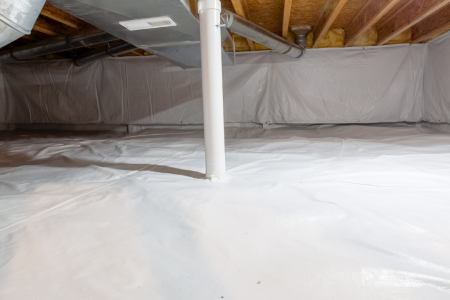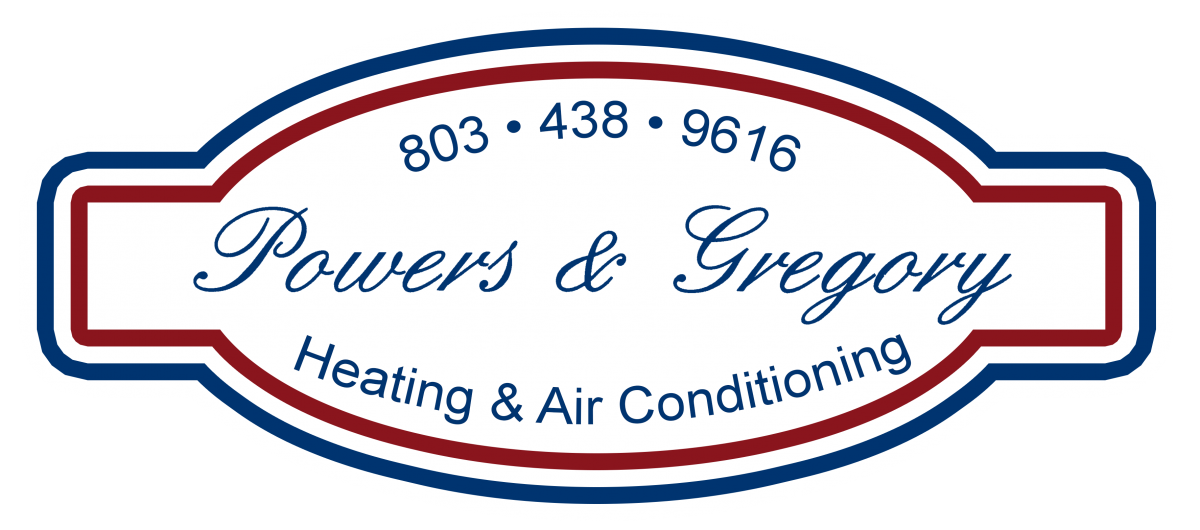
Excessive crawlspace moisture can lead to decay, rot, and mold throughout a house. Crawlspace moisture problems are not new. In fact, research more than 80 years ago identified crawlspace moisture issues and led to some of our current building codes.
Several things have changed since then, making crawlspace moisture problems more common and sometimes more severe. Crawlspaces are put deeper into the ground, making surface and ground water intrusion into the crawlspace more likely. Overhangs are smaller, gutters are omitted or clogged, downspouts discharge near foundations, and ground slopes do not direct water away from houses. Climate change has led to events like the flooding of 2015, and warmer winters.
The biggest changes to houses in the last 80 years, however, have been the introduction of air conditioning along with lower and lower thermostat settings in the summer. Psychrometrics show that warm air can hold more moisture than cool air and that as that air is cooled, its relative humidity increases. Condensation can occur on surfaces cooled by air conditioning.
WHAT TO DO: Since high humidity and condensation are typically found in the summer, crawlspaces should be inspected for mold, standing water and condensation during late spring, summer, and early fall. Crawlspaces typically dry during the winter, so harmful conditions do not usually show up then. Condensation on ducts and wet or hanging insulation are typically the first signs of excessive crawlspace moisture.
SOLUTIONS:
1. Keep liquid water out: Use gutters and downspout extensions to drain roof water at least 10 feet from the foundation. Slope the soil away from the foundation with a fall of at least 6 inches in 10 feet. Do not vent clothes dryers into the foundation. Use French drains and sumps to remove the water that does get into the crawlspace.
2. Keep water vapor out: Cover the entire earthen floor of the crawlspace with a 6-mil or better plastic vapor barrier. Overlap seams and extend the plastic up the foundation walls and piers at least 1 foot.
3. Eliminate cold spots: Make sure duct insulation and its vapor barrier membrane are intact and complete.
4. Make things less cold: Raise indoor thermostat settings to at least 75F. 78F would be preferable. Since comfort is related to both temperature and relative humidity, comfort can be increased by adding dehumidification either with a stand-alone system or with enhanced climate control systems and features.
The ULTIMATE Solution: Create an unvented crawlspace.
1. Cover the entire earthen floor of the crawlspace, lapping and sealing joints, and extending the ground cover up foundation walls and piers.
2. Eliminate foundation vents (ensuring combustion devices in the crawlspace have adequate combustion air).
3. Install a dehumidifier in the crawlspace.
WARNING: Drying a wet crawlspace can prevent future/further rot and decay, and lower repair costs that could be often or substantial. But drying a wet crawlspace can also dry the whole house, leading to cracks, gaps, and noises. These issues are expected and should be handled as normal maintenance issues.
DRY ROT: Fugal decay needs water, so “dry rot” does not occur. Fungi can consume only part of the wood. The part that is left when the decay process ends is dry and powdery. If “dry rot” appears, the decay process has continued long enough to finish. Drying or over-drying a crawlspace does not cause dry rot.
Powers & Gregory offers crawlspace inspections free of charge. Call Us today if you are seeing signs of moisture issues in your home.

